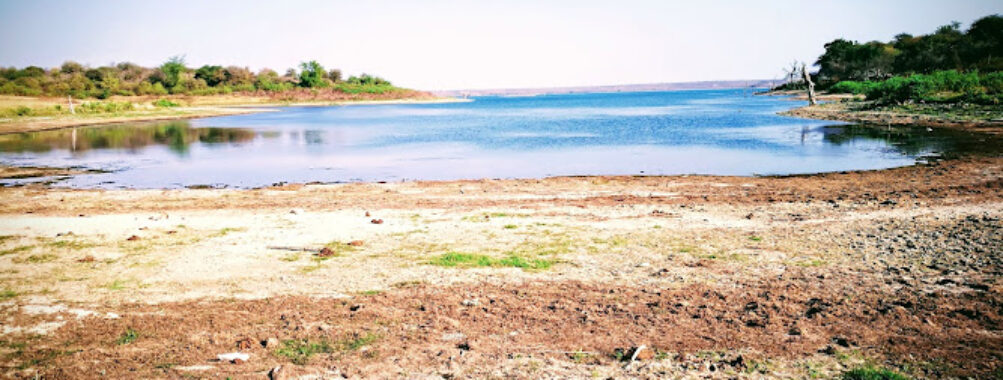
Limpopo National Park
Table of Contents
Description
Limpopo National Park is one of those places that gets under your skin in the best way possible. It’s huge – and I mean really huge – with wild open spaces that make you feel like you’ve stepped into a different rhythm of life. The park stretches across the Mozambique side of the Great Limpopo Transfrontier Park, sharing borders with South Africa’s Kruger National Park, but it has its own raw personality. You’ll find elephants wandering through the mopane woodlands, impalas darting across dusty tracks, and the occasional hippo eyeing you from a riverbank. It’s not manicured or overly packaged for tourists – and honestly, that’s part of the charm.
It’s a place for people who like a bit of adventure and don’t mind trading convenience for authenticity. Sure, there are picnic sites, playgrounds, and even a few sports courts if you’re staying near the main camp areas, but the real magic is out in the bush. You can hike, go canoeing along the Limpopo River, or just sit quietly and listen to the sound of the wind through the grass. And while some folks might expect a constant parade of wildlife like in the more commercial parks, here it’s more about the slow moments – the anticipation of what might wander into view.
Not every part of the park is perfect – some facilities could use a bit of TLC, and if you’re looking for luxury lodges at every turn, you might be disappointed. But if you’re after space, solitude, and that feeling of being somewhere truly wild, Limpopo National Park delivers. It’s the kind of place you remember not just for what you saw, but for how it made you feel – small, awed, and wonderfully alive.
Key Features
- Expansive wilderness areas with diverse ecosystems, from riverine forests to open savannah
- Wildlife sightings including elephants, impala, hippos, crocodiles, and a variety of bird species
- Opportunities for hiking, canoeing, and guided bush walks
- Picnic areas equipped with tables and barbecue grills
- Family-friendly facilities including playgrounds, swings, and slides
- Sports amenities such as volleyball, tennis, basketball courts, and a skateboarding area
- Wheelchair accessible entrances and parking
- Dog-friendly areas, including a designated dog park
Best Time to Visit
If you ask me, the dry winter months (May to September) are the sweet spot for visiting Limpopo National Park. The grass is shorter, water sources shrink, and animals tend to gather in more predictable spots – which means better chances of spotting them. Plus, the temperatures are cooler, so you can hike without feeling like you’re melting into the trail.
That said, the green season (November to March) has its own magic. The landscapes turn lush, the birdlife is spectacular, and the thunderstorms rolling over the plains are something else entirely. The trade-off is that some roads can get muddy and tricky to navigate, so you’ll need a proper 4×4 and a bit of patience. If you’re a photographer, this is when the park puts on its most dramatic show.
How to Get There
Getting to Limpopo National Park is part of the adventure. Most travelers come in through the Giriyondo Border Post from Kruger National Park in South Africa, which is only open during daylight hours. You’ll need your passport, vehicle documents, and a sense of humor for the occasional paperwork shuffle. The roads inside the park range from decent gravel to proper off-road tracks, so a high-clearance vehicle is highly recommended – especially if you plan to explore deeper into the park.
If you’re coming from Mozambique’s side, the access points are fewer and less developed, but they offer a more off-the-beaten-path feel. Either way, give yourself plenty of time to get there; this isn’t the kind of place you rush into. The journey is half the fun – and sometimes half the challenge.
Tips for Visiting
First things first: pack like you mean it. This isn’t a quick city day trip – you’re heading into a remote wilderness. Bring enough water, snacks, and fuel, because once you’re inside, shops and petrol stations are few and far between. If you’re camping, double-check your gear before you leave; nothing kills the mood faster than realizing you forgot tent pegs at sunset.
Wildlife here is, well, wild. Keep a respectful distance, don’t feed the animals, and remember that even the impalas can give you a surprise if you get too close. If you’re traveling with kids, the playgrounds and picnic spots near the main camps are a great way to let them burn off energy before heading back out on game drives. And yes, you can bring your dog to designated areas, but keep them leashed – this is still lion country.
For photographers, early mornings and late afternoons are golden. The light is softer, the animals are more active, and the landscapes just glow. And if you’re the type who likes a bit of sport, pack a ball or racket – those volleyball and tennis courts don’t see nearly enough action, and it’s a fun way to unwind after a day in the bush.
Lastly, don’t expect everything to run on a strict schedule. Part of the joy of Limpopo National Park is learning to go with the flow – whether that’s waiting for a herd of elephants to cross the road or taking an unplanned detour because a muddy track looked too tempting to resist. If you can embrace that, you’ll leave with stories worth telling for years.
Location
Places to Stay Near Limpopo National Park
Find and Book a Tour
Explore More Travel Guides
No reviews found! Be the first to review!